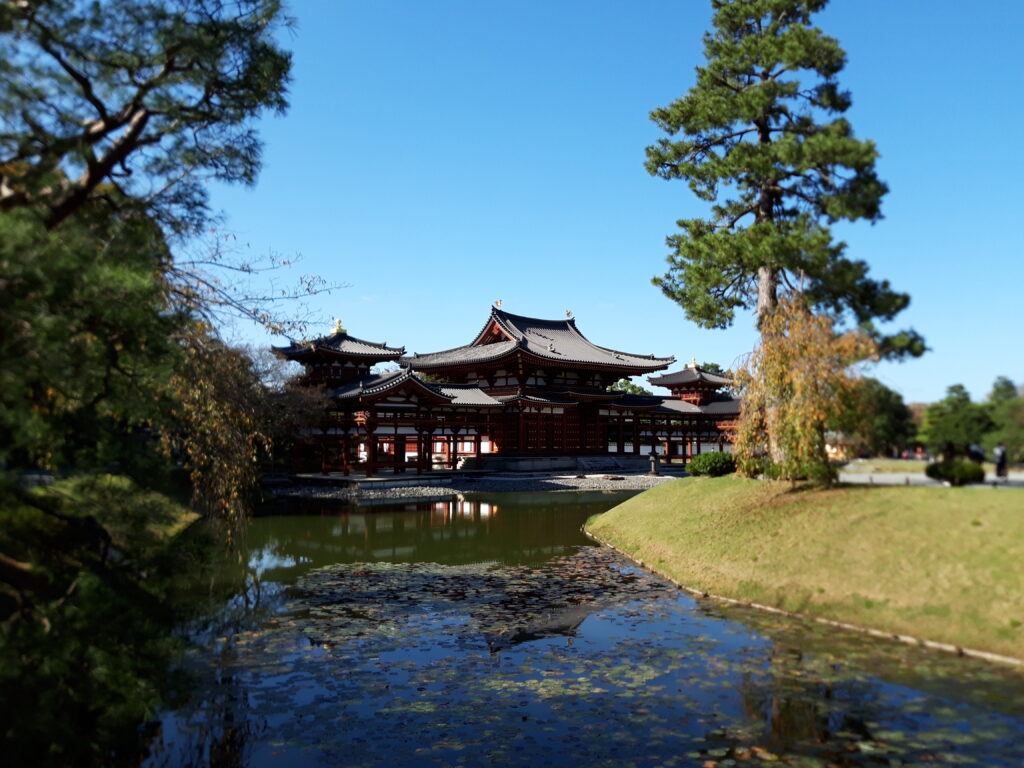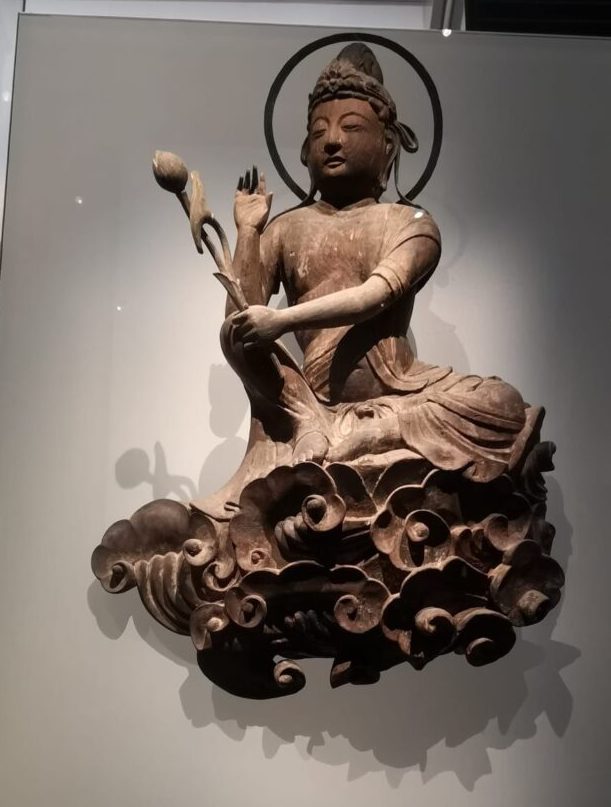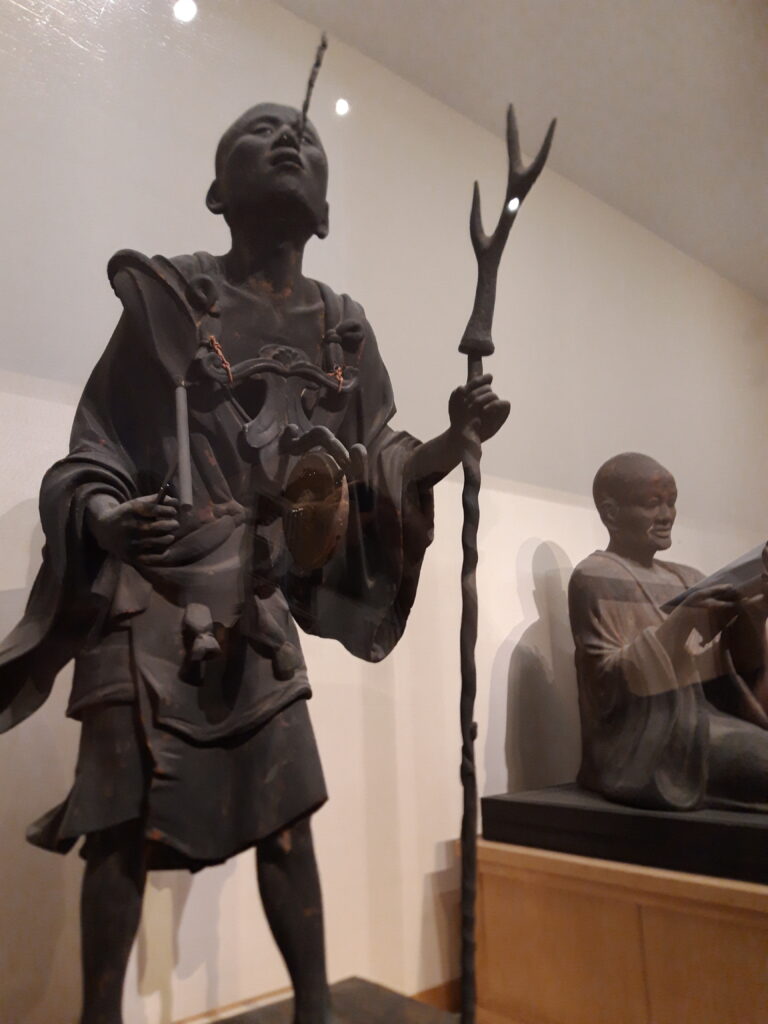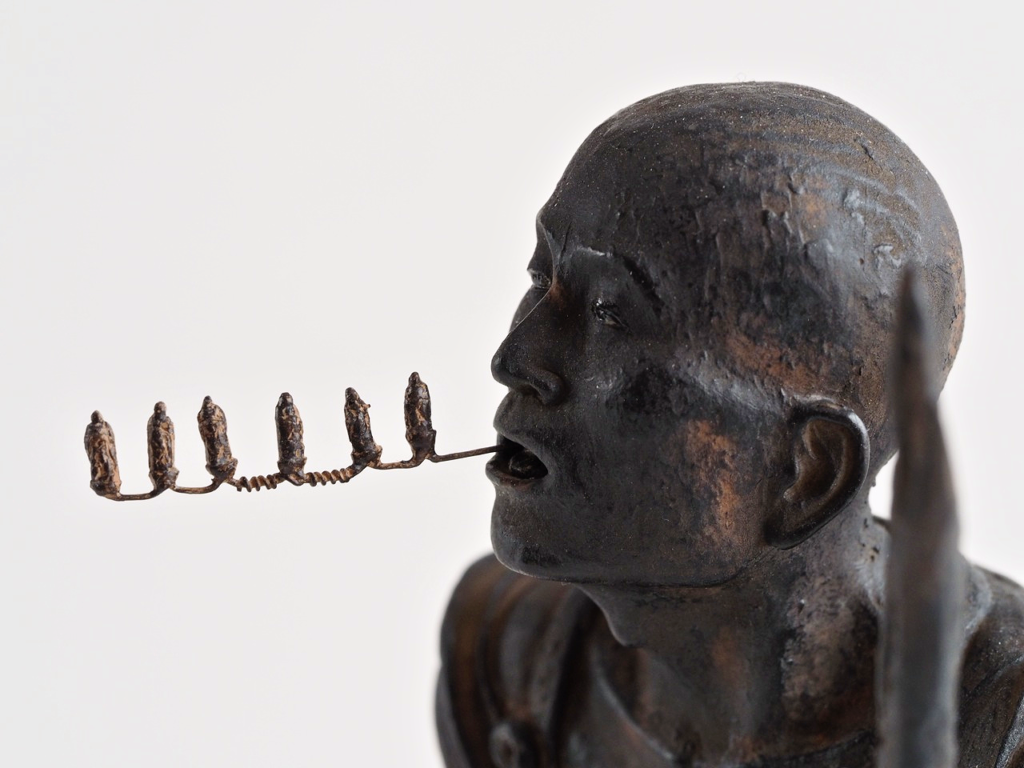
Today, Japanese Buddhists mostly aspire to be reborn in the Pure Land – a Buddhist heaven – rather than attaining Nirvana which is considered too difficult a task for a lifetime. At Uji, a small town next to Kyoto, the Pure Land touches earth. In the middle of the 11th century, at about the time when Pure Land Buddhism came to the fore in Japan, the nobleman Fujiwara no Yorimichi built here a temple called Byōdōin which is a precise imitation of the Pure Land, in the way it is described in the Visualization Sutra (Amitāyurdhyāna Sūtra). The sutra tells us how the Buddha helps aspirants to the Pure Land to reach the heaven by means of a a meditation practice. This practice is based on the visualization of the Pure Land. Also, the recitation of the name of the Buddha Amitabha (Amida in Japanese), the Buddha who resides over the Pure Land, is crucial.

For most of our group, today’s highlight probably were the wooden sculptures of boddhisattvas, carved by the workshop of the famous Heian sculptor Jōchō, which formed the retinue of the Buddha Amitabha in the central hall of Byōdōin. One thing to note is that the Pure Land was definitely imagined as a place full of music! The boddhisattvas play flutes, drums, cymbals, lutes and a host of other instruments which make us aware that hardly any of us has a clear idea of what classical Japanese music actually sounds like.

The idea that heaven must culminate in heavenly music strikes us as pretty familiar. Less obvious we find the central role chanting plays on the worshippers’ path towards the Pure Land, and more generally in many Japanese Buddhist schools. Everyone can attain rebirth in the Pure Land, the Visualization Sutra says, as long as one is mindful of Amitabha and chants his name. We have done it ourselves a few days ago when we stayed overnight on Mount Koya at a temple partaining to the Shingon school and started the morning with chanting: “Na-Mu-A-Mi-Da-Butsu” (“Adoration for Amitabha Buddha”).

A forefather of this practice is the monk Kūya, a famous sculpture of whom we visit in the museum of the small temple of Rokuharamitsuji. The sculpture, created by Kōshō (died 1237), shows how Kūya travelled in the 10th century around Japan and spread the practice of nenbutsu (recollection of the Buddha) by reciting his name. From his mouth exit six images of the Buddha, mounted on a thin wire. Each figure of the Buddha stands for one of the six mōra Na-Mu-A-Mi-Da-Butsu. In Japanese, words are not broken up in syllables, but in signs. All of these mōra are chanted at the same length which makes for a very rhythmic chanting practice. In the sculpture of Kūya, a sound becomes an icon. Incantation and visualization are one.

When a member of the staff of the museum of the Rokuharamitsuji temple tells us the history of the temple, the importance of nenbutsu for many different schools of Japanese Buddhism becomes clear: Kūya founded the temple in 951 and left it unaffiliated. Only later the temple became associated with the “esoteric” Buddhist school Tendai. Today, however, the temple pertains to another esoteric sect, Shingon, the same that we came across on Mount Koya. Throughout the temple’s history, the memory of Kūya as well as his sculpture were preserved. Kūya, best known as an identification figure of Pure Land Buddhism, left in fact a mark on many Buddhist practices.
